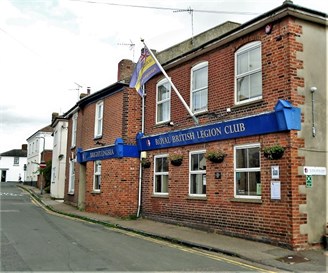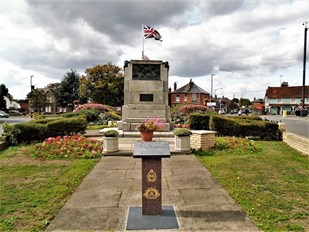Brightlingsea is a tiny port on England’s east coast, at the mouth of the river Colne, just before that joins the seaward end of the Blackwater. These days, 100 years since the ANZAC’s were here in force, it is mainly a yacht harbour. However it still has some small ship movements, exporting scrap metal, aggregates and timber. It is also a base for servicing the Gunfleet windfarm, one of several that are scattered across the mud and sand banks that make-up the Thames estuary, of which Brightlingsea lies at its north eastern end.
Brightlingsea also has the honour of being part of the confederation of Cinque Ports, the only one not more or less facing France; Brightlingsea is a "limb" of Sandwich, about 40 miles almost due south across the Thames estuary in the county of Kent. Sandwich is one of the five main towns that make up the confederation. Cinque (pronounced “sank”) is old Norman French for “five” although there are many more ports and towns in the confederation. That association requires the town to have two Mayors, one for the town alone, the other for the Cinque Port. The Cinque Port Mayor, actually known as a “Deputy” (in this case deferring to Sandwich), can be easily identified by their silver Chain of Office, which sports The Great Opal, a large ovoid stone, which gives the town another connection to “down under” from whence it came.
Since the First World War, Brightlngsea has many family links to Australia and New Zealand, it being here the military hierarchy decided to base thousands of ANZACs, many of those survivors of the Gallipoli disaster, before they were sent to fight again in France and Belgium. At low tide, mud abounds around Brightlingsea, which was considered an ideal training ground for the horrors to come. Here the ANZAC’s prepared for trench warfare, they built bridges and pontoons, dug trenches and tunnels, and laid barbed wire in the dark; the only thing missing was shelling, snipers and machine-gun bullets decimating their ranks.

This year of 2018 saw Brightlingsea’s Royal British Legion honouring the ANZACs with a new and specific Memorial placed near the town’s Cenotaph, at the west end of the main street.



The dedication of that Memorial included representatives from Australia and New Zealand and diplomats from their respective missions in London. There was also the annual cricket match played on the Recreation Ground, where the ANZAC’s were camped 100-years ago. The match was between the Australia House Cricket Club and Brightlingsea Cricket Club; this year the Aussies won!
The ANZAC’s, many of them just arrived from the other side of the world, were not acclimatised to our weather. In the winter of 1916/17, the worst in living memory, the townsfolk saw the hardship the ANZAC’s, were suffering under canvas, and took them into their homes. As an additional Memorial, a wall plaque to commemorate those dwellings will be issued to all those homes still in existence.

The local Masonic Lodge based in Tower street was one of many establishments requisitioned for use by the ANZACs. Those buildings were then used for their education, training and recreation. That same Masonic Hall in Brightlingsea has acknowledged the part that its members played in the Great War and will install a Memorial bronze plaque to that effect at the front of the building after November 11th 2018.